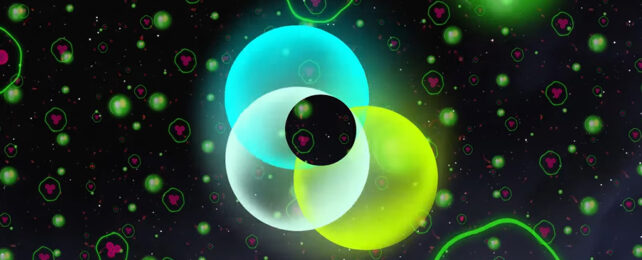Neutrinos are abundant subatomic particles that have a crucial role in the composition of the Universe. Initially considered massless, these barely-detectable particles ought to weigh something according to updated theories.
Exactly what that measurement is has yet to be determined experimentally. An international team of scientists has come up with a new way to solving this little mystery.
Knowing the mass of a neutrino would be a huge moment for science, not least in helping to figure out how the early Universe first got started, but these particles refused to play nice with our current instruments and detectors.
The answer, as put forward in a new study, could lie in tracking beta decay, specifically in the rare radioactive type of hydrogen called tritium. This natural radioactive decay process can be observed, and – potentially – will reveal the weight of the neutrinos involved.

"In principle, with technology developments and scale up, we have a realistic shot at getting into the range necessary to pin down the neutrino mass," says physicist Brent VanDevender, from the Pacific Northwest National Laboratory.
When tritium decays, it creates three subatomic particles: a helium ion, an electron, and a neutrino. By knowing the total mass and the mass of the other particles, scientists are hopeful that the missing mass will be that of the neutrino.
The approach relies on what's known as Cyclotron Radiation Emission Spectroscopy or CRES, which can capture microwave radiation from the escaping electrons, as they travel along a magnetic field, and thus infer the effects of the accompanying neutrino.
"The neutrino is incredibly light," says physicist Talia Weiss, from Yale University. "It's more than 500,000 times lighter than an electron. So, when neutrinos and electrons are created at the same time, the neutrino mass has only a tiny effect on the electron's motion."
"We want to see that small effect. So, we need a super precise method to measure how fast the electrons are zipping around."
CRES has been used before in similar experiments, but the latest study is the first to analyze tritium beta decays and define an upper limit for the neutrino mass. What's more, CRES has potential to scale and develop better than any other technology of this type – though there are still significant technical hurdles to get over.
As the researchers point out, neutrino mass is vital in physics at every scale, including nuclear and particle physics, astrophysics, and cosmology. It may even be that when we do get this particle weighed, we'll have a whole new branch of physics to contend with.
"Nobody else is doing this," says physicist Elise Novitski, from the University of Washington. "We're not taking an existing technique and trying to tweak it a little bit. We're kind of in the Wild West."
The research has been published in Physical Review Letters.
